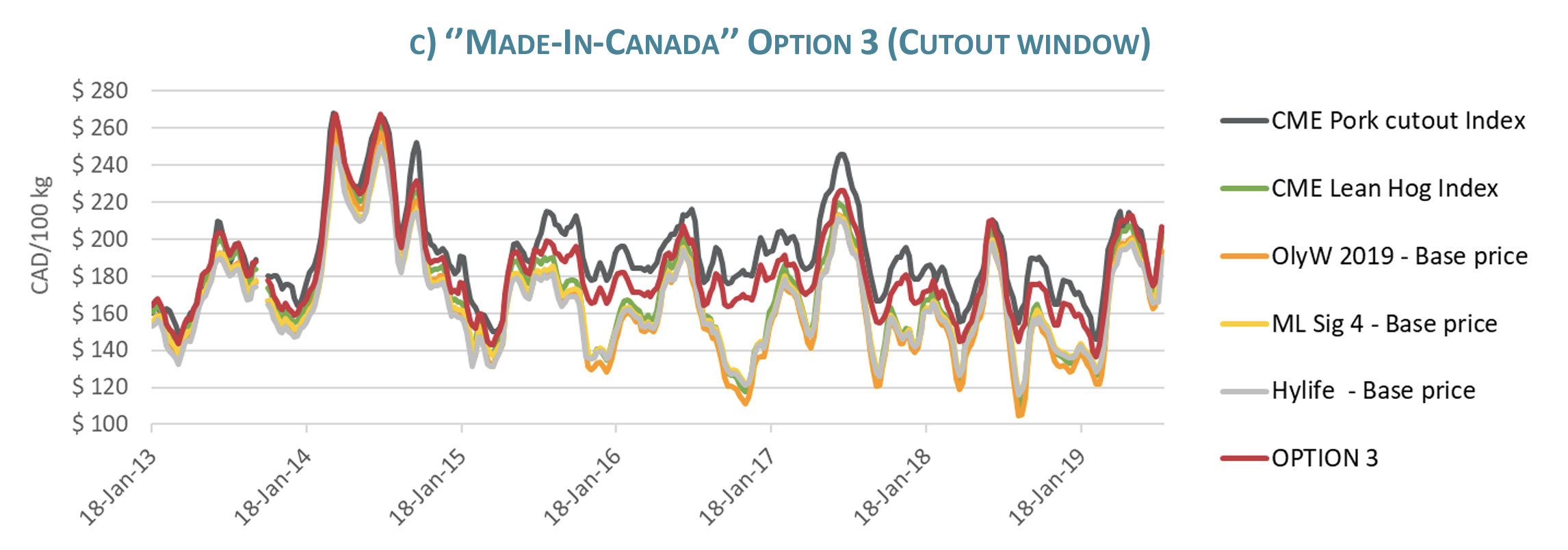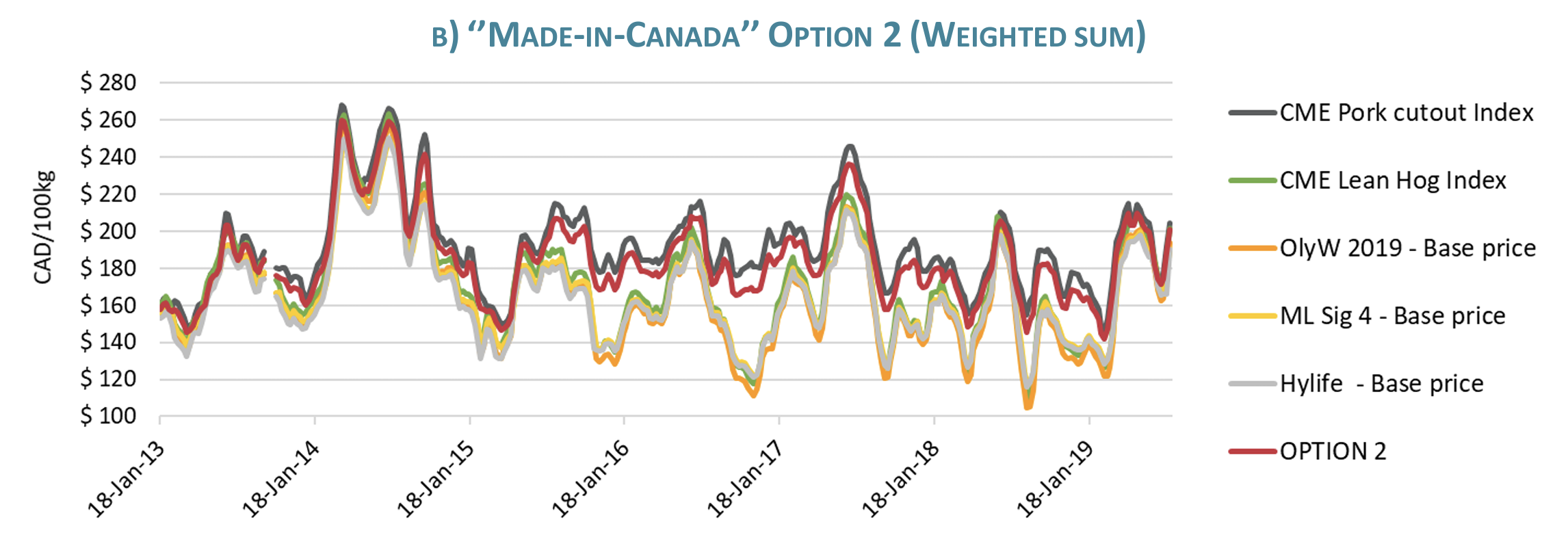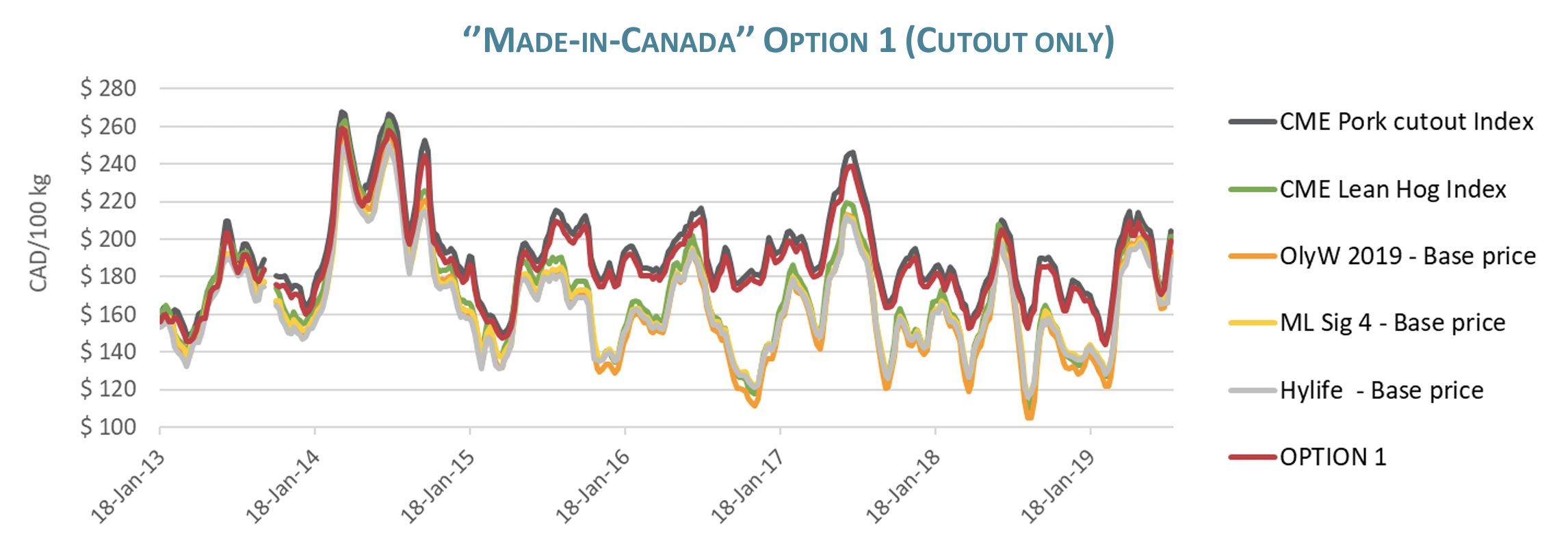Under the direction of the Business Risk Management Committee, a consulting team completed its study exploring the opportunity and feasibility of establishing a Made-in-Canada Hog Price Indicator that better reflects the value of Canadian pigs. Download the Executive summary and Report from the sidebar to learn more.
Mandate
Explore the opportunity and feasibility of establishing a Made-in-Canada hog price based on relevant indicators to better reflect the value of Canadian carcass.
Objective 1
To determine the value of Canadian pork versus that of major competitors in Canada’s key export markets: United States, Mexico, Japan, and China.
Objective 2
To identify and quantify the factors that contribute to determining the value of Canadian pork in the four markets.
Objective 3
To propose a set of market indicators that could be used to develop a Made-in-Canada live hog price based on carcass cutout.
Findings on Objectives 1 and 2:
- In most markets, the Canadian origin of pork products does not determine how buyers perceive their value.
- The main factors shaping product value are price, the brand, and the general quality specifications (ractopamine-free for the Chinese market).
- The only market where the Canadian origin constitutes a differentiating factor is the Japanese market, resulting in an observable premium.
- One should note that the impact of the Canadian origin is compounded by the branding effort undertaken by Canadian packers.
- The premium value on the Japanese market is the result of the joint effort of all players across the Canadian pork value chain.
Findings on Objective 3
- The business structure of the pork industry has evolved.
- The percentage of vertical integration (either corporate-owned or producer-owned) and contract production has increased.
- This has resulted in a shrinking cash market for live hogs whose relevance is nowadays somewhat questionable.
- The use of cutout-based price reference has spread.
- Unfortunately, in Canada, there is no transparency with respect to the value of the pork cutout because of the lack of market information.
- The price discovery process tends to reflect the prevailing business models.
- Going forward, a new model would not be able to be designed single-handedly by one set of actors within the value chain and pretend to maintain its relevance over time.
- Considering the current structure of the Canadian pork industry, a Made-in-Canada live hog price reference model should rely on the following market indicators:
- A cutout reference price or a composite price reference based both on a live hog and cutout-based carcass price reference.
- A Canadian premium:
- Recognizing the premium enjoyed by Canadian products in the Japanese markets, eventually weighted by the exposure of the Canadian pork production to the Japanese markets.
- Recognizing the effort made by producers to raise hogs without using ractopamine to allow access to diverse markets.
- A conversion coefficient:
- Accounting for the exchange rate, as the price reference would be derived from US data.
- Correcting for technical equivalency (metric conversion, carcass weight, average carcass index).
Price Reference Options
1. Cutout Only Reference Price
- The value share corresponds to the percentage of the cutout that would be paid to the producer. This percentage would have to be determined.
- Completely aligning the price of live hog with the American cutout.
- Reducing market volatility.
2. Composite Reference Price (Weighted Average)
- Reference price composed of a live hog reference and cutout reference, weight to be attributed to each component would have to be determined.
3. Composite Reference Price (live hog price with cutout window)
- Reference price is based on a live hog reference with a floor and ceiling price based on a share of the cutout reference. This corresponds to the new Quebec Formula.
- The value share would have to be determined for the floor and ceiling prices. Those values are respectively 90% and 100% in the Quebec Formula.


